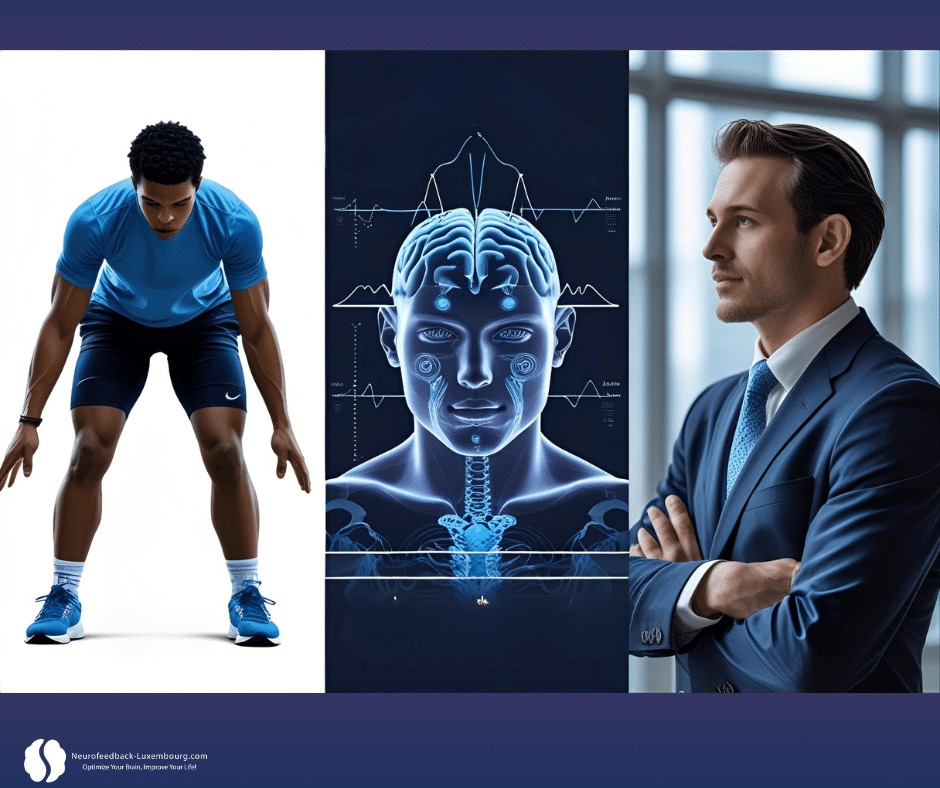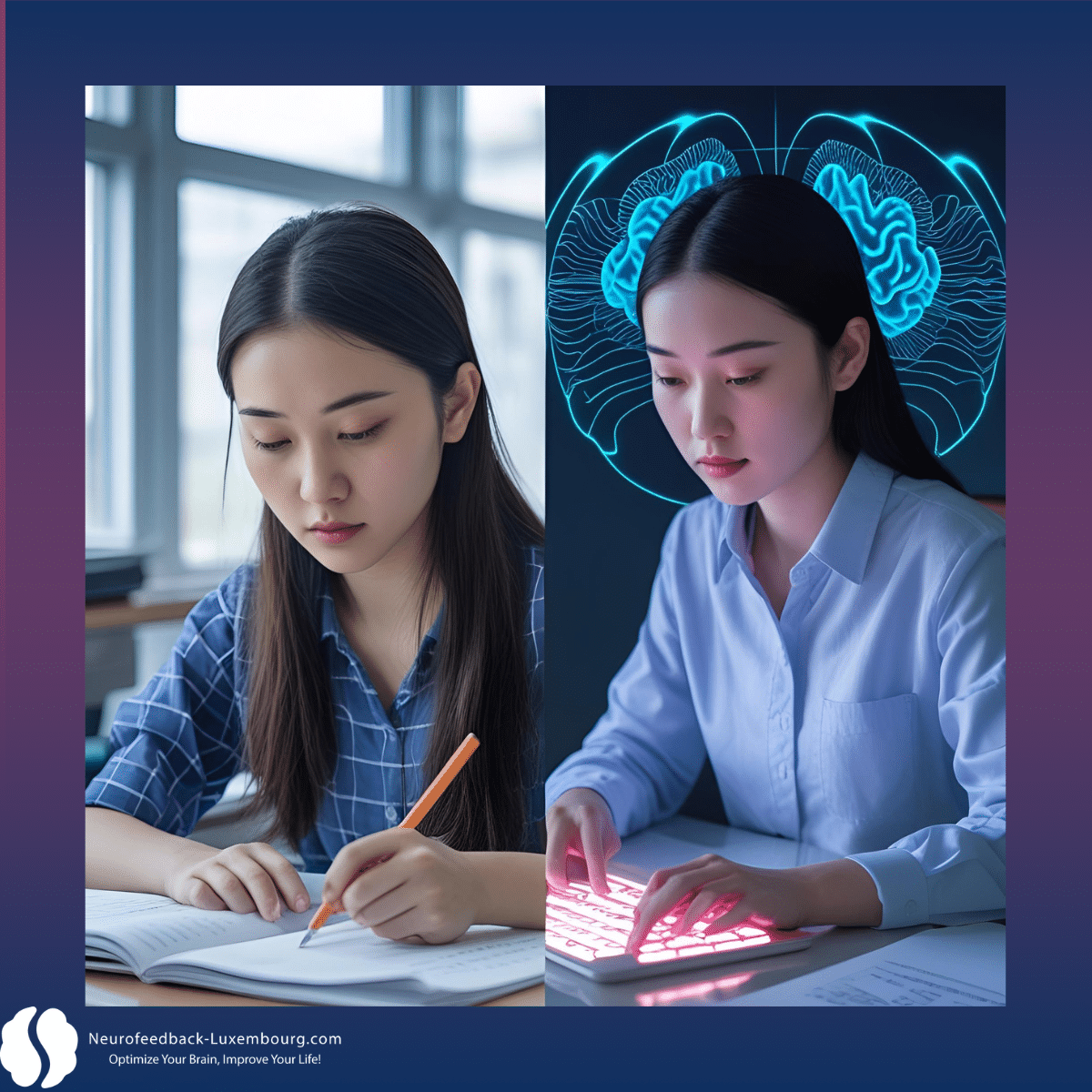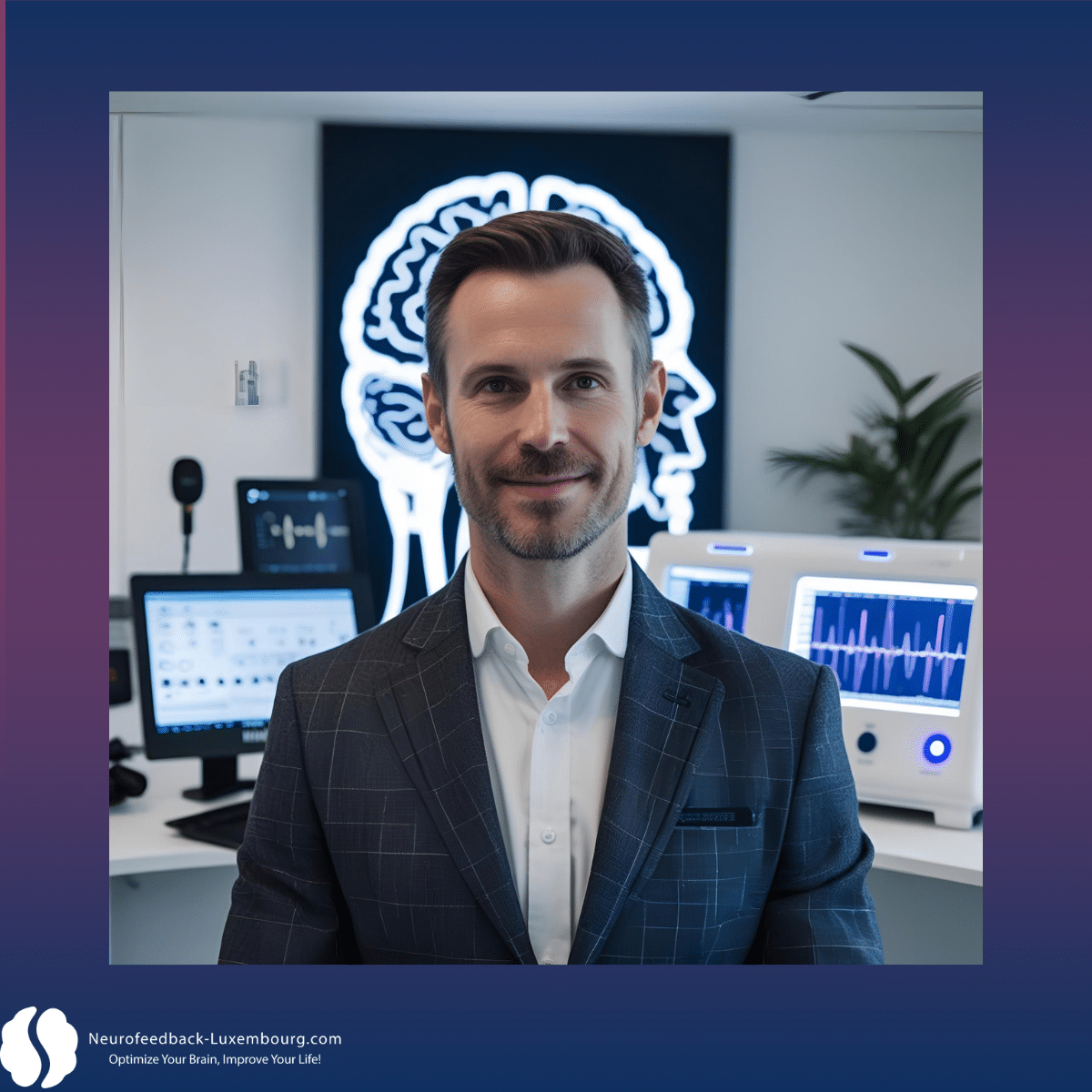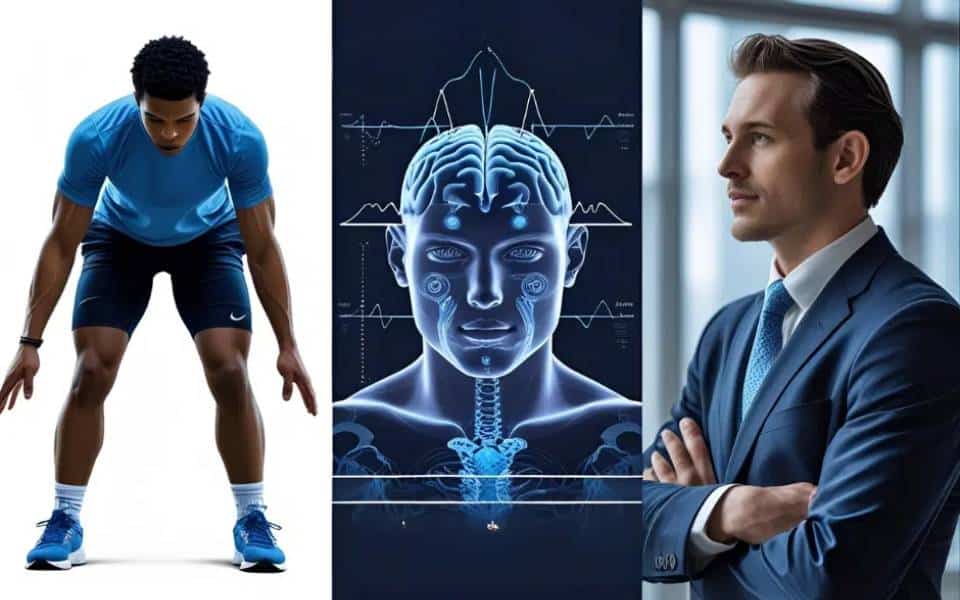In a world where cognitive excellence often determines professional, academic, and athletic success, photobiomodulation performance emerges as a revolutionary technology for optimizing mental capabilities in healthy individuals. At Neurofeedback Luxembourg, we integrate this innovative approach with our advanced neurotherapy protocols to deliver unprecedented brain optimization. Whole body photobiomodulation therapy improves performance and supports exercise performance enhancement by positively influencing physiological and performance parameters, including muscular performance and skeletal muscle performance, as demonstrated in various exercise protocols and clinical trials. The effects of photobiomodulation therapy on skeletal muscle include improvements in skeletal muscle performance, reduction of skeletal muscle fatigue, and enhancement of skeletal muscle recovery, as well as the assessment of skeletal muscle status and performance parameters. The application of PBM includes light emitting diode therapy and low level light therapy to enhance outcomes. PBM accelerates post exercise recovery and accelerates recovery, making it a valuable tool for both cognitive and athletic performance optimization.
Just as photobiomodulation optimizes skeletal muscle performance and accelerates recovery at the muscular level, at Neurofeedback Luxembourg we have pioneered the application of transcranial photobiomodulation to enhance cognitive performance at the brain level. Building on the fundamental principle that the brain, like any muscle, can be trained and optimized, we harness targeted light therapy to boost neural function with the same precision that whole-body PBM enhances athletic performance.
The Science of Cognitive Enhancement Through Transcranial Photobiomodulation Therapy (tPBM)
Transcranial photobiomodulation (tPBM), utilizing precise wavelengths of red and near-infrared light (810 nm), acts directly at the cellular level within the brain to optimize cognitive functions. This non-invasive brain-targeted technology stimulates mitochondrial cytochrome c oxidase in neural tissue, resulting in a significant increase in ATP production – the cellular energy currency specifically within brain cells.
Background
The beneficial effects of photobiomodulation therapy on muscle performance are closely linked to its ability to enhance mitochondrial function, leading to increased ATP production and a reduction in oxidative stress within muscle tissue. These cellular changes can translate into improved muscle performance, delayed onset of fatigue, and faster recovery following intense exercise. While the precise mechanisms of tPBM are still being investigated, current research suggests that it activates key cellular signaling pathways and modulates inflammatory responses, contributing to reduced tissue damage and more efficient recovery. Although numerous studies have demonstrated the positive impact of tPBM on tissue damage and post-trauma/stroke recovery, further research is needed to determine the most effective treatment parameters and protocols for maximizing these benefits.
Transcranial Performance Enhancement Mechanisms of Light Emitting Diode Therapy
The effectiveness of transcranial photobiomodulation performance relies on a dual brain optimization approach:
Brain “Hardware” Optimization:
- Increased ATP production (+30-40%)
- Enhanced cerebral blood flow
- Reduced neuroinflammation
- Stimulated neuroplasticity
Neural Oscillation “Software” Optimization:
- Gamma wave modulation (40 Hz) for focus
- Alpha wave optimization (10 Hz) for creativity
- Neural network synchronization
Specific Applications for Transcranial Cognitive Enhancement
1. Executive Function Improvement Through Transcranial Stimulation
Vielight protocols specifically target and optimize prefrontal networks responsible for executive functions. Our QEEG analyses demonstrate significant improvements through targeted brain stimulation:
- Sustained Attention: increase in attentional performance
- Working Memory: Optimization of mental information manipulation
- Cognitive Flexibility: Enhanced task-switching capabilities
- Inhibitory Control: Strengthened resistance to distractions
2. Memory Consolidation and Learning Acceleration Through Brain Stimulation
Transcranial photobiomodulation performance acts directly on brain-specific learning mechanisms through targeted neural stimulation:
Enhanced Memory Consolidation:
- Hippocampal stimulation via intranasal applicator
- REM sleep phase optimization
- Synaptic connection strengthening
Accelerated Learning Processes:
- Reduction in new skill acquisition time
- Improved long-term retention
- Optimized memory retrieval
3. Creativity and Flow State Optimization Through Transcranial Modulation
Strategic transcranial application of gamma frequencies (40 Hz) directly to brain networks induces optimal cognitive states for creativity:
Facilitated Flow States:
- Reduced default mode network activity
- Increased creative connectivity
- Optimized divergent thinking

Practical Applications:
- Pre-competition sessions for athletes
- Exam preparation for students
- Creative optimization for professionals
Personalized Optimization Protocols
For High-Level Professionals
Executive Performance Protocol:
- Mixed of Vielight Neuro Alpha (10Hz) and Gamma (40 Hz): 20 minutes each sessions
- Focus on DMN
- 3 sessions per week for 6 weeks
Results:
- improvement in executive function scores
- reduction in mental fatigue
- increase in reported productivity
For Students and Learners

Learning Enhancement Protocol:
- Mixed Vielight Neuro Duo (alternating 10 Hz/40 Hz)
- 20-minute sessions before studying
- Adaptive protocol based on QEEG analyses
Observed Benefits:
- acceleration in learning speed
- improvement in memory retention
- Significant reduction in exam-related stress
For Performance Athletes
Athletic Cognitive Enhancement Protocol:
- Neuro Alpha (10 Hz) for mental preparation
- Neuro Gamma (40 Hz) for competition focus
- Integration with neurofeedback for complete optimization
In addition to cognitive benefits, whole body photobiomodulation protocols for athletes may also help reduce muscular fatigue, delay the onset of muscle fatigue (delayed onset muscle fatigue), and improve oxygen uptake. These effects can contribute to enhanced athletic performance and better recovery after intense physical activity.
Synergy with Neurofeedback Protocols

The major innovation of our approach lies in integrating photobiomodulation with our QEEG-guided protocols:
Optimal Preparation: Photobiomodulation prepares the brain by optimizing cellular energy states, making neurofeedback sessions more effective and changes more durable.
Learning Acceleration: The neuroplasticity increase induced by photobiomodulation accelerates acquisition of new brainwave patterns targeted by neurofeedback.
Gain Stabilization: The combination ensures better consolidation of cognitive improvements achieved.
Safety Protocols and Contraindications
Transcranial Photobiomodulation performance presents excellent safety profiles for healthy individuals when applied to the brain. However, certain precautions apply for transcranial applications:
Systematic Pre-Assessment in Neurofeedback-Luxembourg:
- Complete QEEG analysis
- Neuropsychological evaluation
- Performance objective determination
Continuous Monitoring:
- Cognitive biomarker tracking
- Protocol adjustment based on response
- Continuous parameter optimization
Research and Future Perspectives: Insights from Systematic Review
Our current investigation explores artificial intelligence integration to personalize transcranial photobiomodulation performance protocols according to individual QEEG profiles. This approach promises even more precise and effective brain-targeted cognitive optimization.
Ongoing research and clinical and scientific recommendations, based on findings from randomized clinical trials and systematic reviews, will continue to inform best practices and future directions for photobiomodulation protocols.
Clinical Evidence and Validation from Double Blind Placebo Controlled Studies
Recent studies demonstrate the robust efficacy of transcranial photobiomodulation for cognitive enhancement. The efficacy of transcranial photobiomodulation has been demonstrated in a variety of rigorous study designs.
Objective Improvements:
- Enhanced focus and information processing
- Improved memory consolidation
- Increased executive function performance
- Reduced brain fog and mental fatigue
These studies consistently report significant improvements in cognitive and physiological outcomes compared to control groups or control group participants.
Neurophysiological Changes:
- Increased gamma, alpha, and beta wave power
- Reduced delta and theta frequencies at rest
- Enhanced functional connectivity within cognitive networks
- Improved Default Mode Network regulation
Integration with Peak Performance Training
Our comprehensive transcranial approach combines photobiomodulation with:
Advanced Neurofeedback:
- QEEG-guided LoRETA sLORETA Z-score training
- Real-time neural optimization
- Personalized brain training protocols
Complementary Modalities:
- Vagus nerve stimulation for autonomic optimization
- Light therapy for circadian rhythm enhancement
- Comprehensive neurophysiological assessment
Target Applications by Population
Professionals and Executives
- Enhanced decision-making capabilities
- Improved stress resilience
- Optimized cognitive flexibility
- Increased mental stamina
Students and Academics
- Accelerated learning acquisition
- Enhanced memory formation
- Improved test performance
- Reduced academic stress
Athletes and Performers
- Optimized focus during competition
- Enhanced reaction times
- Improved mental resilience
- Accelerated skill acquisition
Conclusion: The Future of Transcranial Cognitive Optimization
Transcranial photobiomodulation represents a revolution in cognitive enhancement for healthy individuals through direct brain stimulation. By combining this brain-targeted technology with our advanced neurofeedback protocols, we offer a holistic, scientifically validated approach to optimizing mental performance through precise neural modulation.
Whether you’re a professional seeking to maximize productivity, a student aiming for academic excellence, or an athlete aspiring to optimal performance, transcranial photobiomodulation performance can help unlock your full cognitive potential through targeted brain enhancement.
Ready to optimize your cognitive performance?
Contact Neurofeedback Luxembourg for a personalized assessment and discover how transcranial photobiomodulation can transform your mental potential through targeted brain optimization.
Neurofeedback Luxembourg – Pioneers in brain optimization with over 2,000 QEEG analyses and 1,500+ sessions completed.

